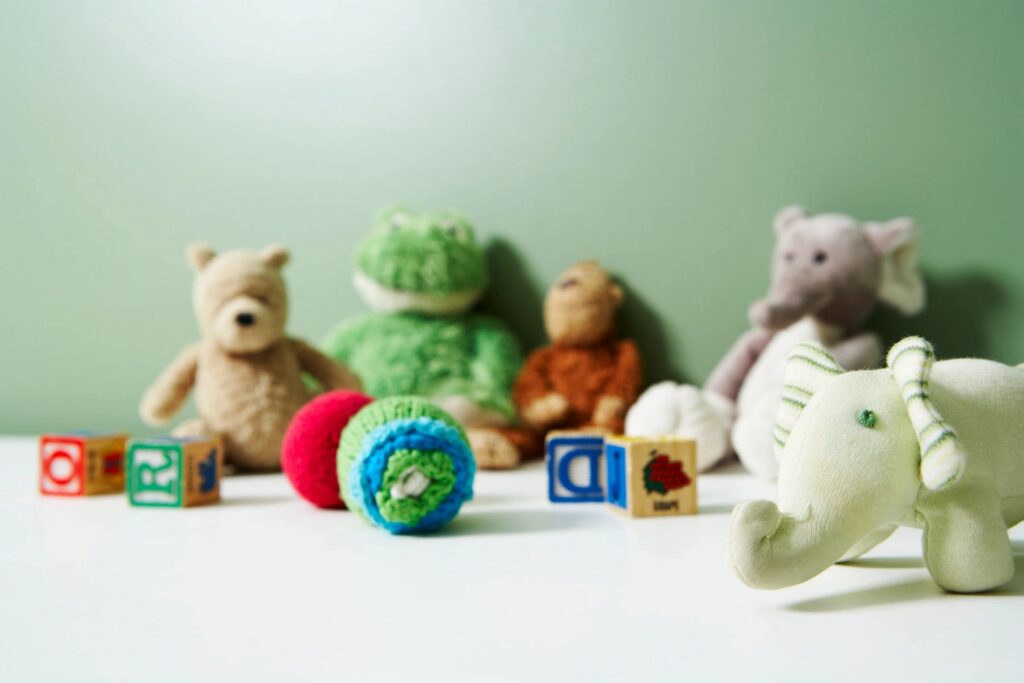
Play therapy is a form of counseling that uses play as a tool for helping people, typically children, work through difficulties. Often play therapy is used to support children with things like learning healthy expression or problem-solving.
A play therapist uses toys, games, and play to assist a child in exploring and expressing their emotions, thoughts, and experiences.
The theory behind play therapy is a child can best resolve problems by communicating through play, a child’s primary language. While adults talk about their problems with other people, children are less likely to do this. Instead, children are more likely to show they are having problems with their behaviors. So then, play allows a therapist to connect with a child and help them work through what is bothering them.
What are the Benefits?
While every person is different, common goals or outcomes for play therapy include:
- Learning healthy coping strategies
- Developing solutions to problems
- Learning responsibility for behaviors
- Developing empathy and respect for others
- Learning new social and relational skills
- Gaining new communication skills
- Improving the ability to identify and name emotions
- Building self-esteem
- Decreasing symptoms of trauma or mental health issues
How Does Play Therapy Work?
Play therapy typically occurs in a welcoming and organized playroom. The room itself can include things like a sand tray, board games, books, dollhouses, puppets, blocks, dress-up clothing, toy food, baby dolls, art supplies, musical instruments, and other toys.
The predictability of the playroom, as well as the interactions with the therapist in it, builds feelings of trust and safety for the child. The therapist puts few limits or rules on the child, which allows them to be creative and in control. Equally important is that the therapist encourages the child’s exploration, curiosity, and free expression of the room and toys.
In addition, by creating this environment, the therapist can connect and form a relationship with the child. During treatment, the therapist uses a combination of play therapy techniques, combined with knowledge of child development and counseling skills, to observe, understand, and support the child.
Lastly, a play therapist will assess a child’s interactions with their parents or guardians, their play style, and the themes that arise in their play. Sometimes toys and play can be symbolic. For example, a child who sorts or organizes toys may feel anxiety and a need to have control over their environment.
Who is it For?
Anyone can benefit from play, including adults of all ages. However, play therapy is especially helpful for children between the ages of 3 and 12.
Research supports the effectiveness of play therapy for children experiencing a range of social, emotional, developmental, and behavioral challenges. Furthermore, play therapy can help in circumstances like:
- School or peer issues
- Divorce
- Domestic violence
- Grief and loss
- Chronic illness
- Natural disasters
- Physical or sexual abuse
- Aggression or anger issues
- Mental health challenges like depression or anxiety
- ADHD
- Developmental delays or learning disorders
- Autism
Who Can Provide Play Therapy?
Play therapy should be provided by a licensed mental health professional like a therapist or psychologist, who has a graduate mental health degree. Additionally, a therapist should have experience and training in child development and the skills of play therapy.
Does Play Therapy Work?
Yes, it does! According to the Association for Play Therapy and an analysis of over 100 play therapy studies, play therapy is a very effective intervention for children.
Final Thoughts
As the famous child psychologist and pioneer in the study of child development, Jean Piaget said, “Play is the work of children.” Play, whether it is at recess, at home with family, or with other kids, is critically important to the development of healthy, well-adjusted children.
In closing, play therapy harnesses the needs, interests, and communication styles of children to help them and their families learn, grow, and heal.
